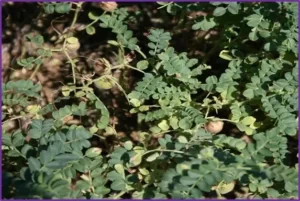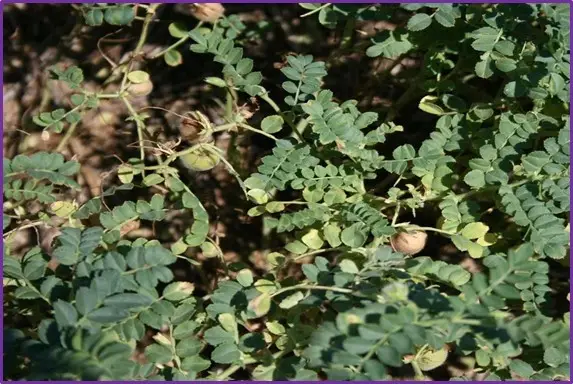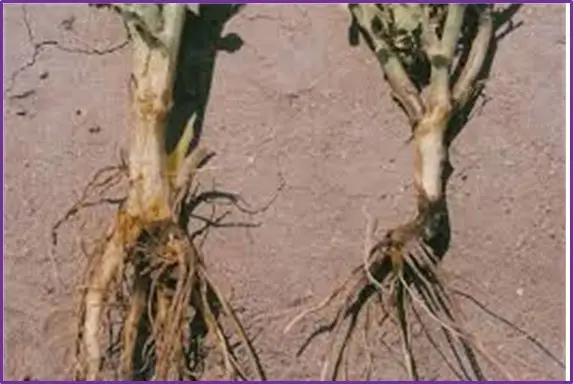Chickpea :: Disease :: wilt ( Fusarium oxysporum f. sp. Ciceri)
chickpea wilt | fusarium wilt of chickpea | fusarium wilt of gram | wilt disease of chickpea
Chickpea wilt (Fusarium oxysporum f. sp. Ciceri) common soil/seed borne disease causing 10-12% annual loss in India. It is typical vascular disease causing xylem necrosis.

The disease is systemic in nature and plant may be infected at any stage. The fungus can survive in soil up to six years even in absence of the host. It is widely spread disease covering all major chickpea growing stage, however, its prevalence is less common where cold temperature persist for longer period. Since spores of the fungus are found in soil, therefore utmost care should be taken to save the crop right from choice of variety to integrated management. Presence of sufficient soil moisture and 25-30°C temperature can cause fast spread of this disease. In case, fungus is present in soil and infected seeds have been sown, the crop has to face severe damage.
Symptoms:-
- The upper portion of diseased plants, their petioles and leaves show drooping, plants show mortality as a result of forced drying.
- Young plants or seedlings collapse, internal tissues from the collar region downwards becomes dark and colourless.
- If plant is cut vertically in almost two parts, the central tissue in a line is seen colourless or black. But streak does not appear on stem.
Management :-
- Cultivation of wilt resistant varieties.
- Cultural control measures including timely sowing, mixed or intercropping of chickpea with mustard or linseed helps in reducing wilt disease.
Chemical Control:-
- Seed treatment with 3g Carbendazim (Bavistin) or Carboxin + 2g Thiram} +4g Trichodenna viride per kg of seeds controls the initial disease development. Similarly, Benlate T (30% Benomyl + 30% Thiram) @ 1.5 g/kg of seeds has also been found quite effective against soil borne pathogens.
What is the Scientific Name of Chickpea Wilt Pathogen ?
Fusarium oxysporum f. sp. Ciceri
What is the Seed treatment of chickpea for wilt ?
Seed treatment with 3g Carbendazim (Bavistin) or Carboxin + 2g Thiram} +4g Trichodenna viride per kg of seeds.




🎓 Student Discussion
Share your questions and insights with the community!
Loading discussion...